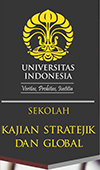Abstract
This paper examines China's response to the Rohingya crisis in Myanmar from a theoretical perspective, drawing on both liberal and Asian cultural values. The study adopts a qualitative approach and employs document analysis to collect data. The findings suggest that China's response to the crisis can be explained by the liberal values of interdependence, cooperation, and institutionalism, which have guided China's peaceful and cooperative approach to resolving the conflict. However, the study also reveals the importance of Asian cultural values, particularly empathy and save-face, in shaping China's diplomatic behavior towards the crisis. The paper argues that China's response to the Rohingya crisis can be divided into three aspects: infrastructure investment, mediation between Myanmar and Bangladesh, and humanitarian assistance, all aimed at promoting collaboration and peace in the region. The study contributes to the understanding of the complexities involved in China's foreign policy decisions and provides insights into the role of cultural values in shaping international relations.
References
Alam, M. U. (2021). Role of China in Rohingya Crisis. International Business Research, 15(1), 59-71.
Barber, R. & Teitt, S. (2020). The Rohingya Crisis: Can ASEAN Salvage Its Credibility?. Survival, 62(5), 41-54.
Berlin, I. (1969). Four Essays on Liberty. Oxford: Oxford University Press.
Bi, S. (2014). The Economic Relations of Myanmar-China. IDE-JETRO.
Chan, G. (2015). China Eyes ASEAN: Evolving Multilateralism. Journal of Asian Security and International Affairs, 2(1), 75-91.
Cook, A. (2010). Positions of responsibility: A comparison of ASEAN and EU approaches towards Myanmar.International Politics, 47, 433-449.
Ding, L. H. & Rahman U. (2010). The Rohingya Refugees: A Security Dilemma for Bangladesh. South Asian Studies, 4(9), 124-133.
Gallie, W. B. (1978). Philosophers of Peace and War: Kant, Clausewitz, Marx, Engels and Tolstoy. Cambridge:Cambridge University Press.
Geng, L. (2006). Sino-Myanmar relations: analysis and prospects. Culture Mandala.7(2), 1-15.
Green, P., MacManus T. & Venning, A. C. (2015). Countdown to Annihilation: Genocide in Myanmar. London:International State Crime Initiative.
Haacke, J. (2010). The Myanmar imbroglio and ASEAN: Heading towards the 2010 elections. International Affairs, 86 (1), 153-174.
Jackson, R. & Sorensen, G. (2003). Introduction to International Relations: Theories and Approaches. Oxford and NewYork: Oxford University Press.
Joy, A. (2018). Understanding Chinaʼs Response to the Rakhine Crisis. US Institute of Peace.
Keohane, R. O. & Nye, J. S. (1987). Power and Interdependence Revisited. International Organization, 41(4), 725-753.
Keohane, R. O. (1992). Institutional Theory and the Realist Challenge after the Cold War. Cambridge: Centerfor International Affairs, Harvard University
Keohane, R. O., & Nye, J. S. (1998). Power and Interdependence in the Information Age. Foreign Affairs, 77(5), 81–94.
Lind, J. (2018). Life in China’s Asia: What Regional Hegemony Would Look Like. Foreign Affairs, 97(2).
Malik, J. M. Myanmar’s Role in China’s Maritime Silk Road Initiative. Journal of Contemporary China,27(111), 362-378.
Mobley, T. (2019). The Belt and Road Initiative: Insights from China’s Backyard. Strategic Studies Quarterly, 13(3), 52–72.
Narine, S. (1998). ASEAN and the Management of Regional Security. Pacific Affairs, 71(2), 195-214.
Poh, A. & Li M. (2017). A China in Transition: The Rhetoric and Substance of Chinese Foreign Policy under XiJinping. Asian Security, 13(2), 84-979.
Rosecrance, R. (1986). The Rise of the Trading State: Commerce and Conquest in the Modern World. New York: Basic Books.
Rosecrance, R. (1995). The Obsolescence of Territory. New Perspectives Quarterly, 12(1), 44–50.
Rosecrance, R. (1999). The Rise of the Virtual State. New York: Basic Books.
Song, L. (2018). China and the international refugee protection regime: Past, present, and potentials. Refugee Survey Quarterly, 37(2), 139-161.
Tarling, N. (1993). The Cambridge History of Southeast Asia. Cambridge: Cambridge University Press
Yi, H. (2013). Myanmar’s Policy toward the Rising China since 1989. Ritsumeikan Center for Asia Pacific Studies.
Zahed, I. U. (2021). Responsibility to Protect? Th International Community’s Failure to Protect the Rohingya. AsianAffairs.
Tosatti, I. (2018). China’s Foreign Policy in Southeast Asia: The Evolution of Sino-Myanmar Relations AfterNaypyidaw’s Political Transformation of 2011.
BBC. (2021). Aung San Suu Kyi: Myanmar democracy icon who fell from grace. Retrieved from https://www.bbc.com/news/world-asia-pacific-11685977
Lwin, N. (2019). The Irrawaddy. Retrieved from https://www.irrawaddy.com/specials/infographic-30-years-chinese-investment-myanmar.html
Ministry of Foreign Affairs of the People’s Republic of China. (2018, August 2 9). Regular Press Conference[Press Release]. Retrieved from https://www.mfa.gov.cn/ce/cemu//eng/zt/fyrth/t1589364.htm
Ministry of Foreign Affairs of the People’s Republic of China. (2017). Speech by Foreign Minister Wang Yiat the Opening of Symposium on Internation al Developments and China's Diplomacy in 2017. Retrievedfrom https://www.fmprc.gov.cn/mfa_eng/wjbxw/t1518130.shtml
Nian, P. (2020, January 21). Upgrading China-Myanmar Relations. China-US F ocus. Retrieved fromhttps://www.chinausfocus.com/foreign-policy/upgrading-china-myanmar-relations
Sun, Y. (2021, July 25). China and Myanmar After the Coup. The Wire China. Retrieved from https://www.thewirechina.com/2021/07/25/china-and-myanmar-after-the-coup/
Soomro, N. N. (2017, November 14). ASEAN’s Role in Conflict Management: Active and Effective?. Asia ResearchInstitute of the University of Notting ham. Retrieved from https://theasiadialogue.com/2017/11/14/aseans-role-in-conflict-management-active-and-effective/
The Nobel Prize. (2021). Aung San Suu Kyi – Facts. Retrieved fromhttps://www.nobelprize.org/prizes/peace/1991/kyi/facts/
UN. (2015). Statement by Xi Jinping President of the People's Republic of China At the General Debate of the 70th Session of the UN General Assembly. Retrieved fromhttps://gadebate.un.org/sites/default/files/gastatements/70/70_ZH_en.pdf
UN. (2021). Rohingya Refugee Crisis. Retrieved from https://news.un.org/en/focus/rohingya-refugee-crisis
UNHCR. (2019). Rohingya Emergency. Retrieved from https://www.unhcr.org/rohingya-emergency.html#:~:text=On%2016%20March%202018%2C%20the%20UN%20and%20its,the%20JRP%20remains%20just%2032%20per%20cent%20funded
UNHCR. (2021). Refugee Response in Bangladesh. Retrieved fromhttps://data2.unhcr.org/en/situations/myanmar_refugees#_ga=2.41206946.1620750129.1639579585-1025247549.1639579585
UNICEF. (2021). Rohingya Crisis. Retrieved from https://www.unicef.org/emergencies/rohingya-crisis#:~:text=What%20is%20the%20Rohingya%20crisis%3F%20When%20hundreds%20of,was%20the%20children%20who%20caught%20many%20people%E2%80%99s%20attention.
Recommended Citation
Yuan, Changrui and Lee, Brice Tseen Fu
(2023)
"EXPLORING CHINA’S RESPONSE TO THE ROHINGYA CRISIS: A LIBERAL PERSPECTIVE,"
Journal of Terrorism Studies: Vol. 5:
No.
1, Article 1.
DOI: 10.7454/jts.v5i1.1056
Available at:
https://scholarhub.ui.ac.id/jts/vol5/iss1/1
Included in
Defense and Security Studies Commons, International Relations Commons, Terrorism Studies Commons


